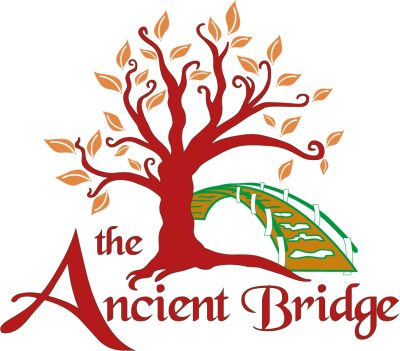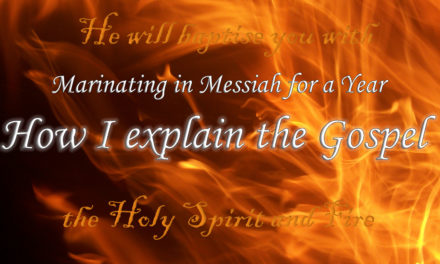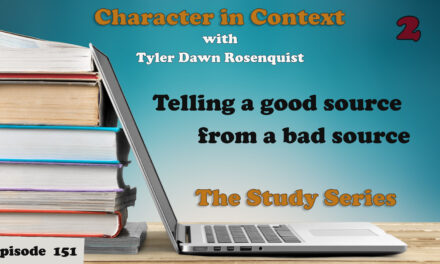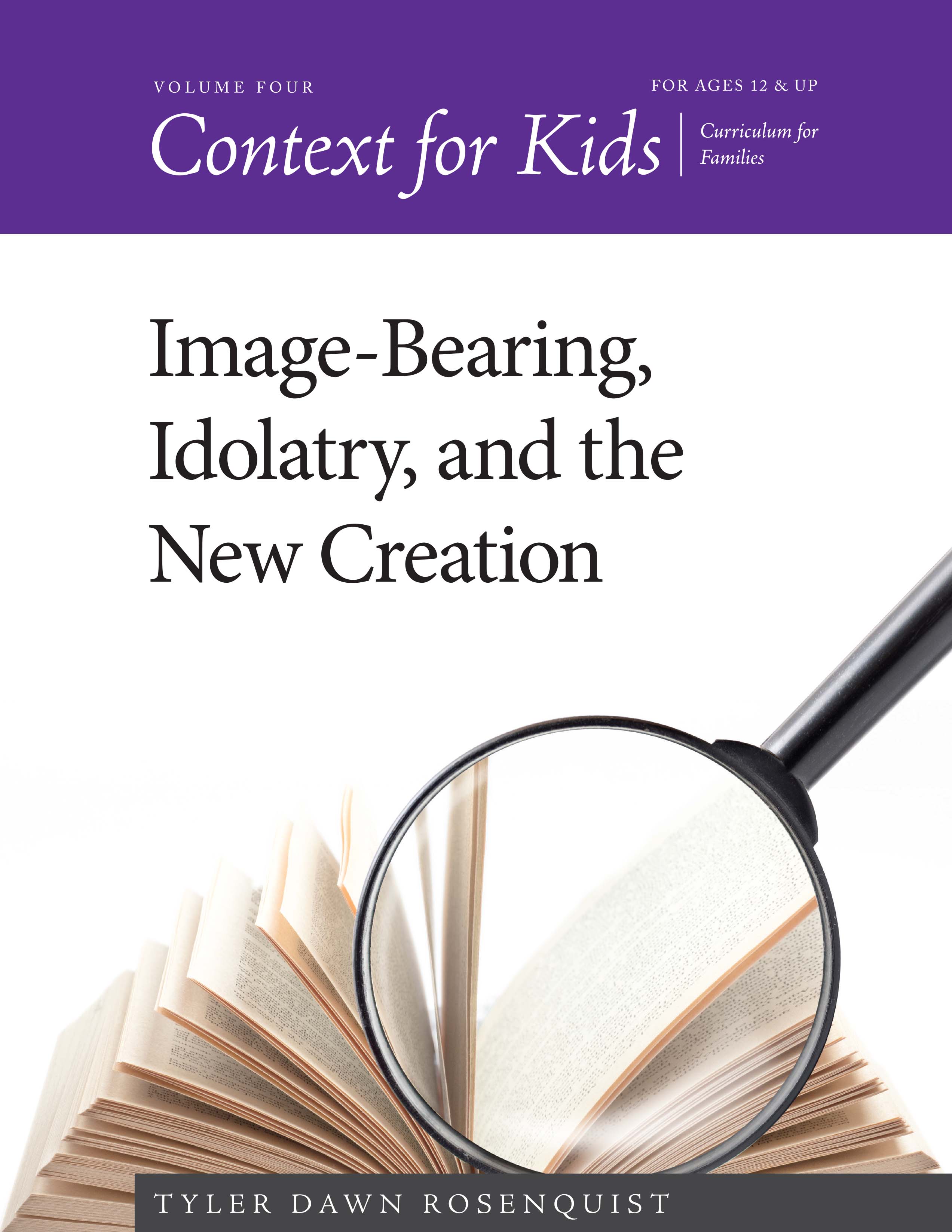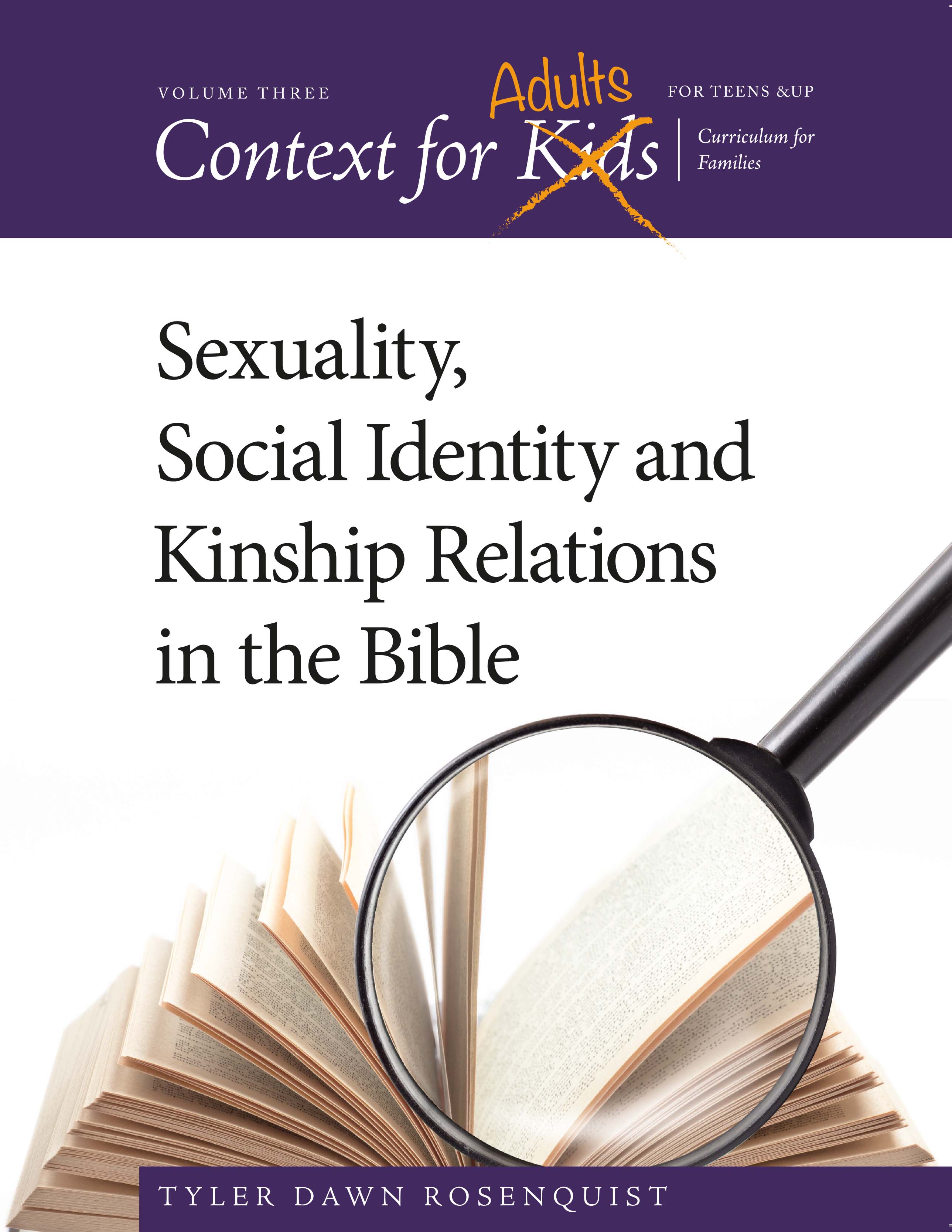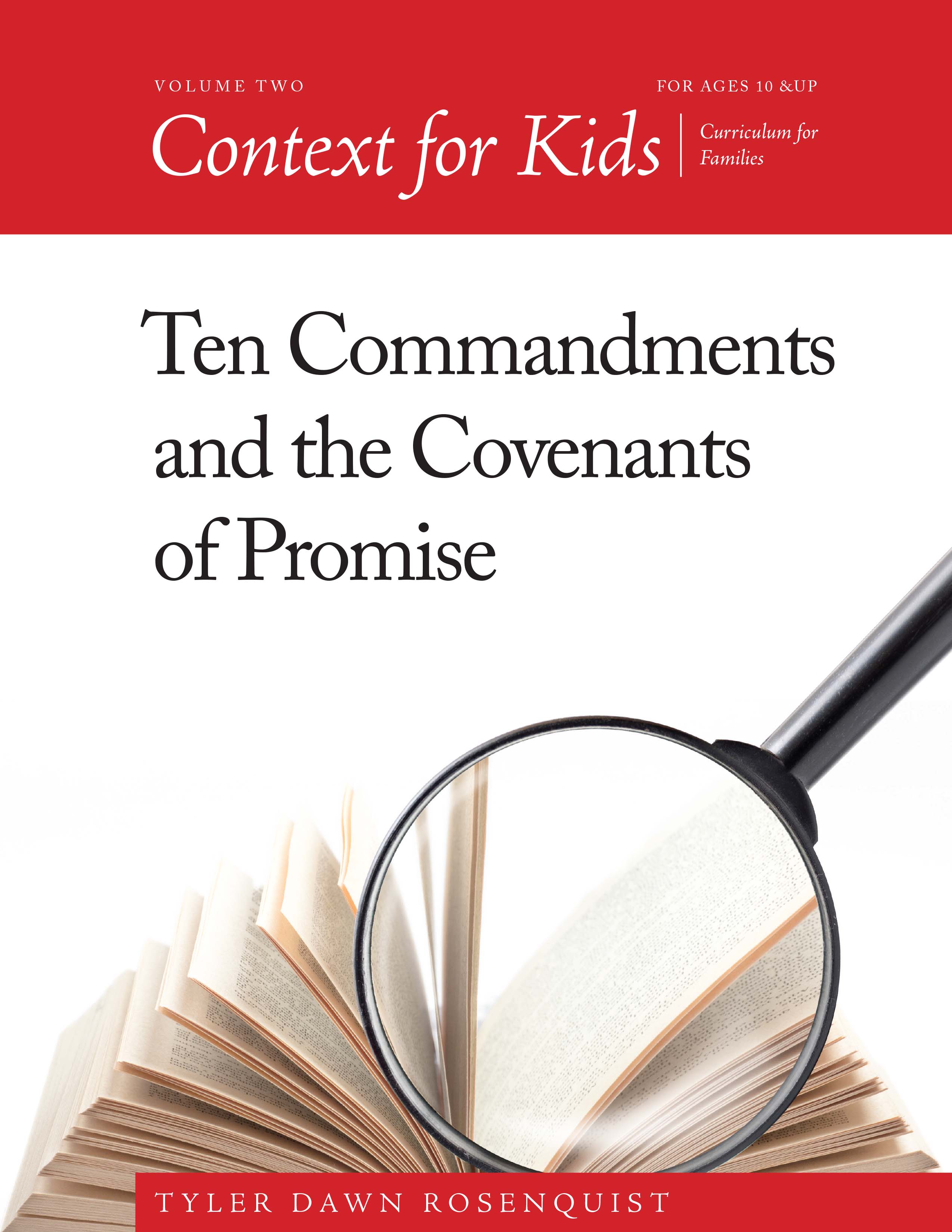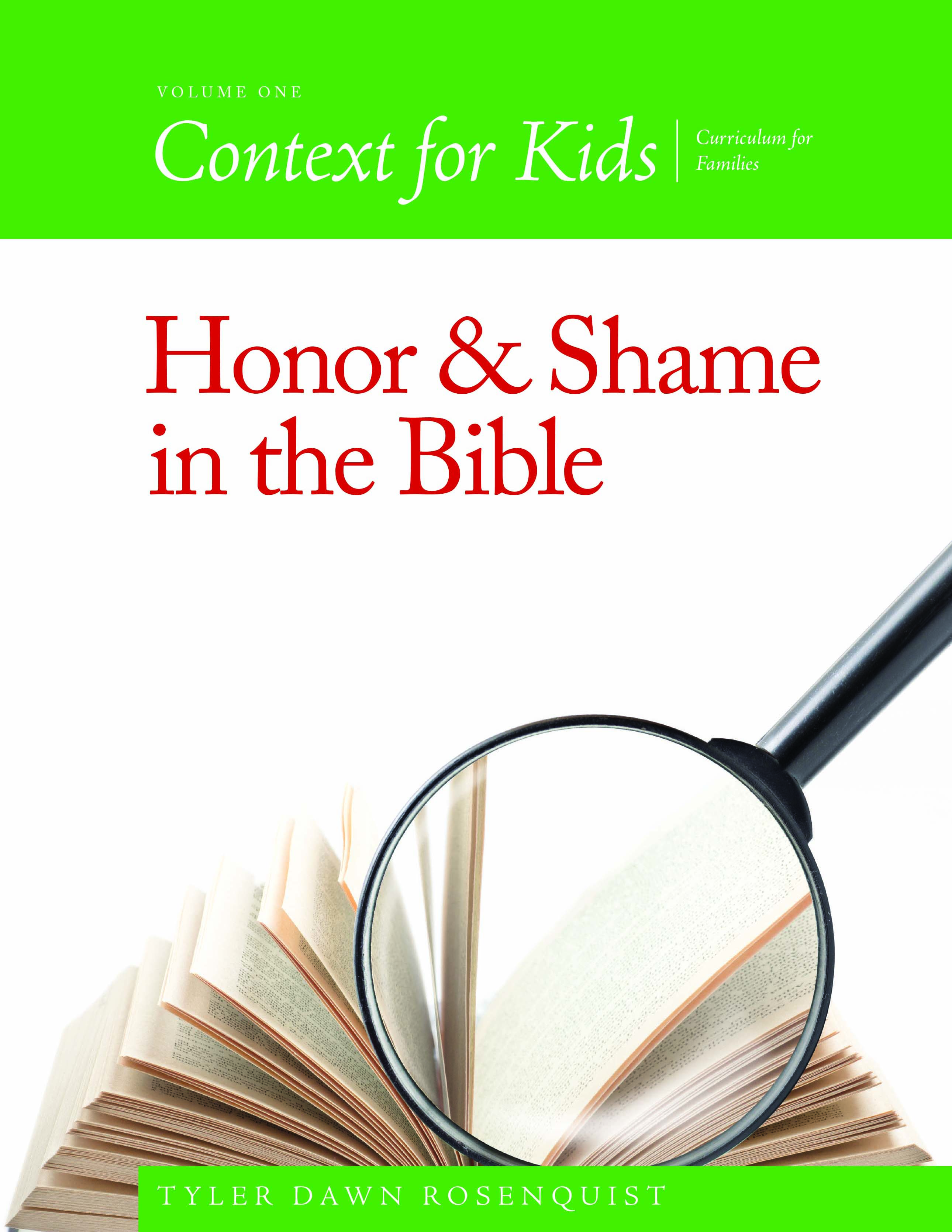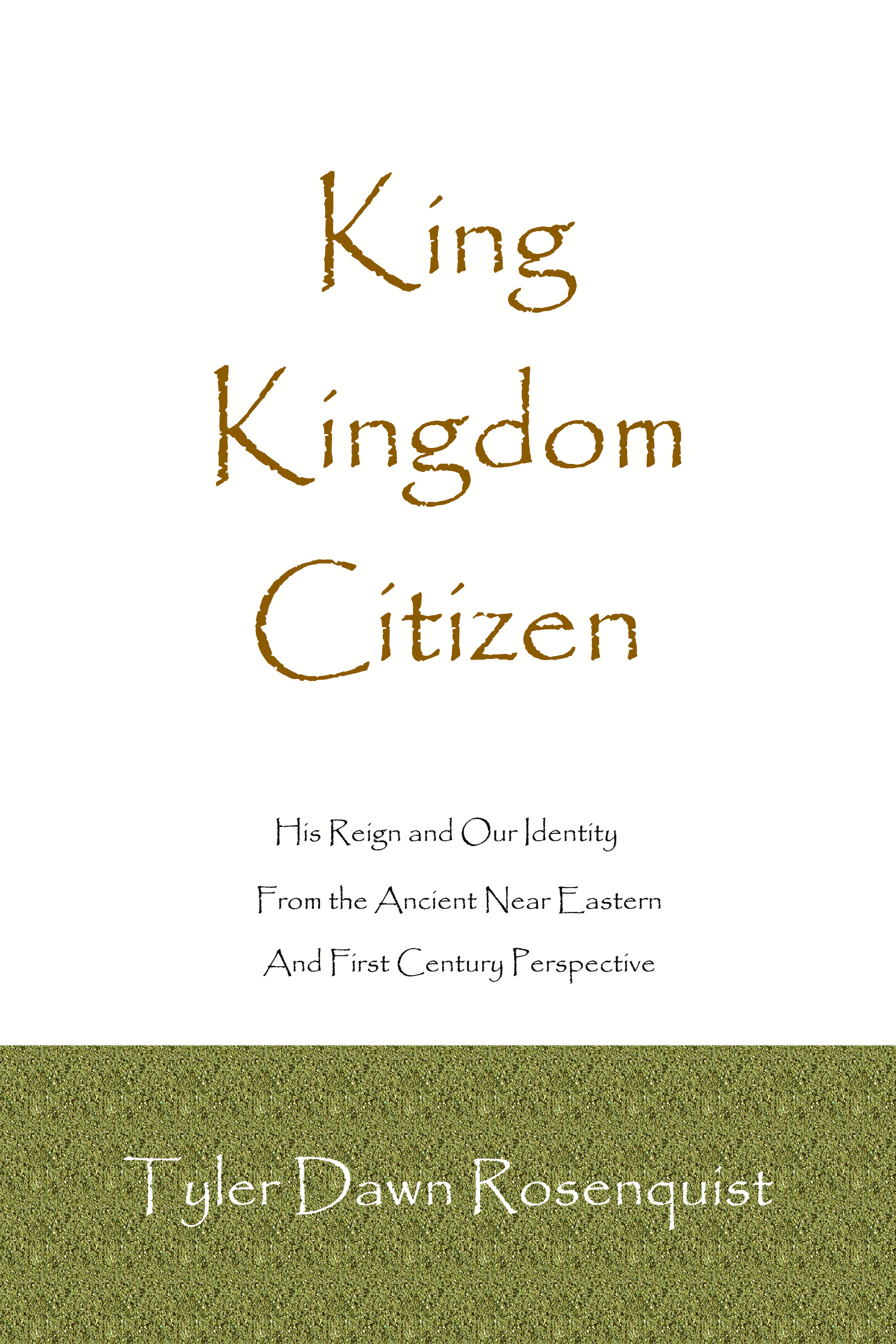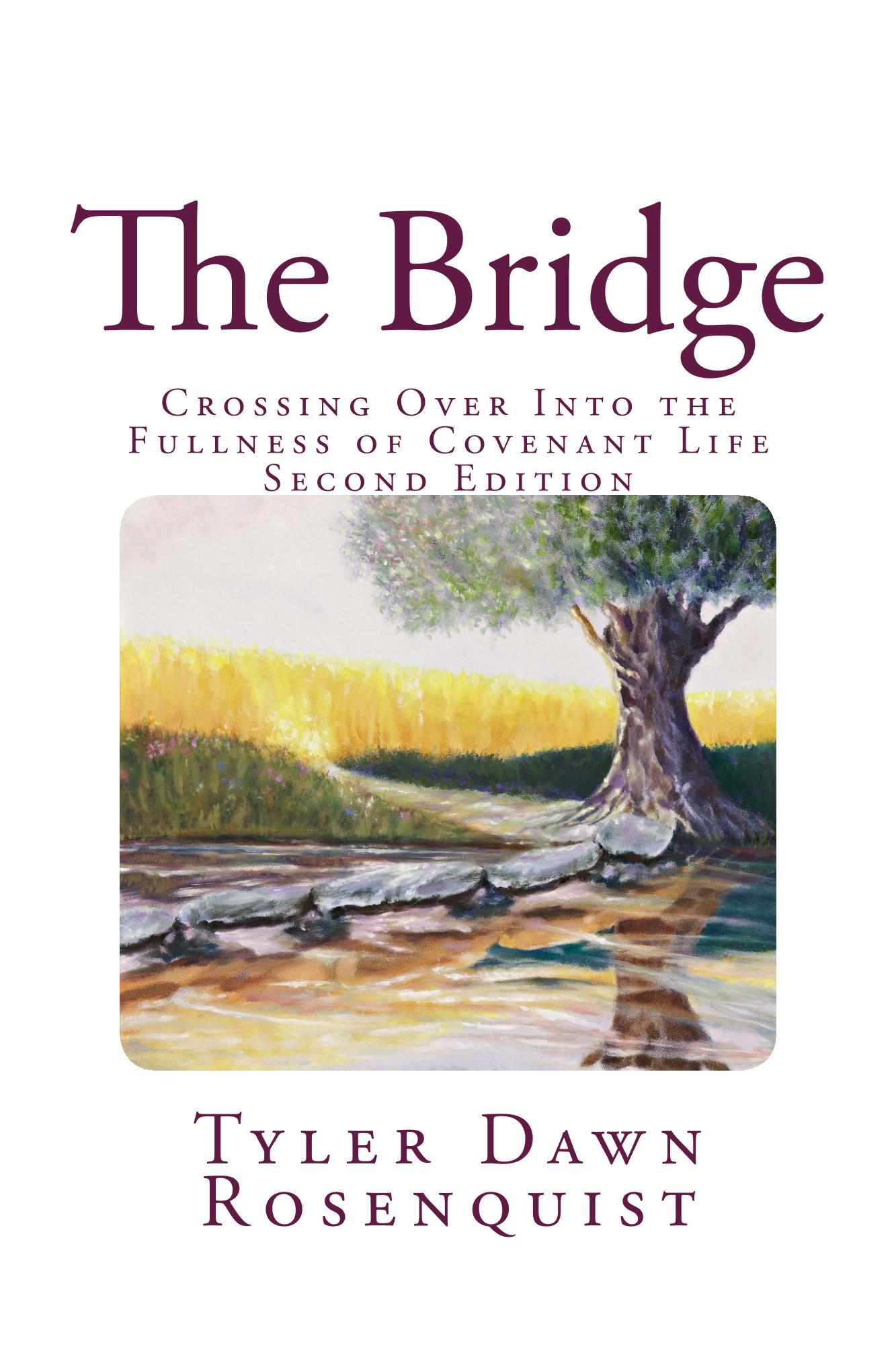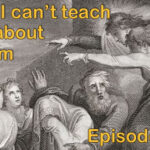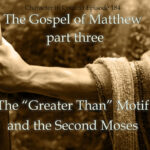I apologize in advance because I am going to stuff this broadcast with so much historical data from Josephus, the Dead Sea Scrolls, the Bible and the Talmud that you might end up feeling like you get hit by a Mack truck by the end. And the amount of stuff I left out is staggering, but we will cover a lot of the rest of it as we continue on next week with our journey through the “woes” of Matthew 23.
************
Transcript–not very polished or edited, but this is what you get
We hear an awful lot about the Pharisees. In your typical non-scholarly book, they are presented as hypocritical legalists who believe in the resurrection from the dead, with little other information provided, and in scholarly circles, there is a battle between those who want to straight-up equate the first-century Pharisees with the later rabbis and the much later Orthodox Jews vs those who question exactly how much authority the Pharisees really had, and whether they all but died out in the post 70 AD world, gradually giving way to Rabbinic thought that was influenced by the Pharisees but in many ways is not even remotely the same, and certainly differs from modern Judaism, which takes many of its cues from the 12th century scholar Maimonides.
In the Christian world, no one wants to be called a Pharisee, but in modern Judaism, almost every group wants to be called the inheritors of the presumably deep roots of Pharisaic Judaism. I believe the truth lies between the extremes and today we’re going to talk about what we do and do not know about the Pharisees, what is presumed, and what is assumed based on texts where they are probably being described, yet are not explicitly named.
Hi, I’m Tyler Dawn Rosenquist and welcome to Character in Context, where we explore the historical context of Scripture and talk about how it bears on our own behavior and witness as image-bearers. You can find my teachings on my websites theancientbridge.com and contextforkids.com as well as on my youtube channels, accessible from my websites. You can also access past broadcasts on my podcast channel characterincontext.podbean.com and my context books for adults and families are available through amazon.com.
Everyone wants those deep roots, right? The more ancient your beliefs, the more legitimate they seem to modern people. We have all heard that the first Pope of the Catholic Church was Peter, right? Despite the fact that the Roman Catholic Church as we know it wouldn’t exist for many more hundreds of years and there were certainly no popes. In the same way, the modern neo-pagan movement, which is just a couple hundred years old, has begged, borrowed and stolen what they like from whoever they like, oftentimes based only on appearances, 19th romantic literature, fairy tales, urban legends and just about everything other than archaeology. But they claim to be an ancient religion, despite a growing consensus among both scholars and new agers who do their homework that their religion is not only very new, but a historically inaccurate view of ancient paganism. As with the Catholic claim of first-century Popes, so we have Wiccans and Neo-pagans seeking out credibility through dubious or outright ridiculous ancient claims.
But all such claims must be examined and should never be taken at face value. People are very sensitive about their religious views and are quick to believe anything that bolsters credibility. And we all do it, I am not pointing fingers here. It’s like this ginormous blind spot, total pass that we tend to give ourselves, even while despising when others do it—and seeing it so clearly when it’s their blind hypocrisy and not our own.
Because of this deep roots mentality, we have the unfortunate tendency of many in Christian and Messianic circles to presume that what we see in Modern Judaism is a good road map of the first century, when nothing could be further from the truth. First-century Judaism revolved around the Temple, period. That was the center of their universe, the dwelling place of God on earth and the center of His worship. The priests were powerful because they had a position of inherited responsibility—that doesn’t mean, however, that all priests were powerful because many were just poor Judeans and Galileans who did their two weeks yearly, plus feasts, at the Temple. But the highest-ranking Jews (besides the Herods) were the High Priestly family of Ananas, the chief priests who were responsible for the Temple operations, and the aristocrats. It is from these groups that Josephus says the Sadducees came from. They weren’t all Sadducees, but Sadducees were a faction, or sect, of Judaism that came from the upper class. Below that on the social ladder, we have the retainers of the elites, the upper and middle-level bureaucrats who worked in service to the upper class. This is where we would mostly find the Scribes and Pharisees, who were by definition educated—although people in the upper class could also be Pharisees. That’s what we are going to talk about today—where the Pharisees and Scribes fit into society, who they are, and how they fit into the Hellenistic Jewish world of the 200 years between the Pharisees first mention by Josephus in the court of John Hyrcanus, to really their last pure champion of Eliezer ben Hyrcanus in the first and second century before the movement gradually morphed into the Rabbinic over the next few centuries.
I have done so much reading about this over the years, but for this teaching, I splurged and bought two new books, which I read from front to back because they were just excellent. The author’s name is Anthony J Saldarini. Amazingly balanced scholar—able to look at the historical records and honestly say, “It does say this, and it doesn’t say that.” “This might be true but we can only say that if we assume X.” A lot of people just don’t know how to read a document without reading into it what they want to see. Now that doesn’t mean I agree with everything he writes and he did have one huge paradigm that I disagreed with, but all and all, he is the kind of scholar you want to read because he is just stinking honest. My new books from him are “Pharisees, Scribes and Sadducees in Palestinian Society” and “Matthew’s Christian-Jewish Community.” I also supplemented his books with some articles by Jacob Neusner, and if you are reading an article of his on the subject of the Pharisees, make sure it is a later article as, for a while, he championed Morton Smith’s debunked 1959’s era theories on the Pharisees, which Neusner later denounced based on the evidence in other sources. Also, Steve Mason, Lawrence Shiffman, Loeb’s Josephus, the Mishnah, and Babylonian and Jerusalem Talmuds, etc.
So, who were the Pharisees anyway? As I mentioned last week, or next week, as I am inserting a teaching in the middle of the series after I realized I had skipped a step, Josephus mentioned four hairesis (hai-reh-seece), or philosophies, within Judaism. Pharisees, Sadducees, Essenes and the “fourth philosophy” of revolutionaries. We would call the “fourth philosophy” Zealots. Philosophy, in Hellenistic times, was a way of thinking and a way of life—a way to practice virtue and shun evil. In light of this definition, Josephus was right to call these competing sects of Judaism “philosophies” as we would have to admit that Catholicism, Protestantism, Pentecostalism, and Messianism are all philosophies of Christianity, which is in turn started out as a philosophy of ancient Judaism and remained so for a few hundred years. We might call Phariseeism a “sect” not in terms of a seclusive cult, as moderns generally imagine when they hear the word, but a voluntary grouping of likeminded people who have certain goals and ideas that they would like everyone to follow for the good of society. That was the nature of ancient philosophy. The Pharisees wanted everyone to agree with them and live like them, so did the Essenes, and the Zealots wanted everyone to revolt against Rome and the Sadducees really only cared about the rich and even they fought bitterly with one another. A sect is never the whole main group, so Judaism would not be a sect—modern sects of Judaism would be the Hasidim, the Orthodox, the Reform, and the Karaites. BUT, in the first-century world, there was no separation of religion and politics. In fact, no one compartmentalized anything. There was no politics without religion, or religion without politics. There was no area of life that religion didn’t enter into—regardless of whether you were a Jew or a pagan.
Throughout the wars of the Jews, and Antiquities books 13-18, and Life, Josephus repeatedly points to the Pharisees as being very popular with the common people and that ritual and social life was lived according to their standards, but he also points to them as being power-hungry and hypocritical. Josephus had this paradigm, and we all have our agendas, right? But he had this paradigm that stability is always good and chaos is always bad—it’s actually a very legitimate way of thinking in the ancient world, where chaos meant death, disease, enslavement, loss of inheritance, and worse. It didn’t just mean a peaceful exchange of power as we know it in the West. So, for Josephus, a stable ruler and government shouldn’t be messed with—even if they were heathens. Governments should not be toppled lightly unless there was no alternative. He speaks very ill of anyone who threatens the peace—and during Hasmonean times, specifically during the reign of Salome Alexandra, the Pharisees sometimes showed themselves to be a power-grasping, murderous, vengeful group who would, out of one side of their mouth, prophesy good for a Herod while plotting with his family to overthrow him out of the other side. Josephus, who called himself a Pharisee (at least in his youth) approved of the way of life, and considered it the proper interpretation of Judaism, but considered the Pharisees themselves to not live up to their own standards. They had the right interpretation, in other words, but their political agendas were dangerous. It is safe to say that Josephus had a real love/hate relationship with them—but this is often the case within sects, where people who agree are often the harshest critics of those within their own movements. In all, Josephus claims that the Pharisees only numbered about 6,000 men. When we take Tacitus’s account of 600,000 people living in Jerusalem at the fall in 70 AD, and Josephus’s claim that 1.1 million were killed and 97,000 enslaved (it happened at the Passover which would bump up the population), six thousand people is like nobody when compared to the entire population. They made up such an incredibly small part of the population that their dominion over social life and popularity can only be explained by the fact that they were educated in a time when the overwhelming majority were incredibly impoverished and uneducated and in need of popular champions—the Pharisees, according to Josephus, filled that role for them.
But what Josephus had to say was nothing compared to the vitriolic attacks on the Pharisees (and everyone else) by the Essenes. Those guys were downright hateful. As such, as they never said anything nice about anyone but themselves and were categorically opposed to everyone who wasn’t an Essene, we have to be careful with their material—just as we have to read Josephus through the eyes of someone who hates political instability and adjust our perceptions accordingly, we have to weigh the inherent sectarian prejudice against outsiders.
IF scholars are right, and the Pharisees are the ones referred to by the Essenes as “Ephraim”—making the Sadducees “Mannasseh” the ones who “control Israel”—then the Damascus Document found near Qumran portrays the Pharisees as the “builders of the wall”—perhaps a reference to their command to build fences around the Torah (Avot 1:1)—who are specifically called out for, among other things, promoting marriage to one’s niece and polygamy (both permitted and even promoted in later Rabbinic texts). They describe this group as spinners of spider webs, despisers of God who have separated from true Judaism, hated by God and responsible for God’s anger against His people, following false teachers and therefore not understanding of the truth that the Essenes knew. Other scrolls prophesy, and I am reading here from Lawrence Shiffman’s article “The Pharisees and Their Legal Traditions According to the Dead Sea Scrolls,” on page 266 that they will be destroyed by the “last prince,” that they have removed God’s boundaries by teaching false things, speaking rebelliously against God’s Laws, prophesying deceit, and causing Israel to go astray. They are expounders of false laws, etc. and as a teacher, they have the “man of lies” as opposed to their own teacher of righteousness.
So, there’s that, but no one ever called the Essenes a bunch of nice guys after reading enough of their writings. So, we can’t take what they write and say, “Yep, those Pharisees were devils in disguise.” Like last week when we talked about polemic in the ancient world, this was how philosophical opponents talked about one another.
How about the Bible? Well, the Bible presents the Pharisees as (1) educated, (2) primarily linked to Jerusalem, (3) active in the synagogues, (4) concerned with Sabbath observances, purity concerns, tithing, divorce, (5) the new-fangled belief in the resurrection of the dead and the world to come and angels. It absolutely presents them as some sort of loosely based voluntary association—we see nothing here or in any documents about educational requirements for being a Pharisee, what their personal backgrounds were, membership requirements, etc. We don’t know about leadership (beyond later Rabbinic stories about Hillel and Shammai, who are not otherwise mentioned historically but whom we have no reason to doubt the existence of), or about how one became a Pharisee. We have a very few rulings attributed to them in the Bible, as well as some others in the Talmud, recorded much later. We don’t know if all Pharisees were well off, although we suspect they were because it takes an education in order to study and even have access to the Torah scrolls and leisure to learn beyond simple synagogue attendance. A poor man, unless he was working miracles, like Yeshua or a Hasid like Honi the Circle Drawer, wasn’t going to be given any attention. Of course, the most famous Pharisees in the Bible were Gamaliel and Paul. In Acts 15:5 we see Pharisees counted among the believers and appearing as witnesses or petitioners before the council.
So, the typical Pharisees were obviously well placed socially. They had time to study, and leisure to travel and investigate an upstart Galilean. They could read and write, which would make them valuable as retainers to the upper class. Likely many of them worked as counselors, scribes, bureaucrats, for the Temple and perhaps for the Romans, with whom they practiced a policy of getting along wherever they could, judges, and other administrative functions. I can say “obviously” only because there was no middle class in the Roman Empire. There were people who had money and those who did not. The poor were insanely poor and made up the bulk of the Roman Empire and especially in a place like Judea, which was nearly on the border of the Parthian Empire, which Rome was never able to defeat.
The Pharisees offered the people of the land, the am ha’aretz, a way to live out their identity as Jews with pride, despite their poverty. Although many of their legislations were oppressive, like the Hillelite ruling giving any man the right to leave his wife for any reason he wanted, and directives to tithe absolutely everything when they were already struggling to get by under the oppressive Roman taxes, most of the “boundary setting” regulations in existence at that time were probably entirely doable. Boundary setting is something we see in every culture, it marks off us from them. For the Jews, their boundary markers were things like circumcision, the Shema, tassels on their garments, and not eating unclean animals. These had become just incredibly important to the Jews after the time of Antiochus Epiphanes when things like circumcision were outlawed and punishable by death. It wasn’t just a commandment anymore, but a marker of who was and was not Jewish, who was and was not worthy. For a group to come along and give them pride in being Jews under Roman occupation, to teach them how to live set-apart lives, that was a powerful force in favor of the Pharisees. Josephus, I forgot to mention earlier, made a point of saying how the Pharisees actively cultivated good relationships with the villagers and citizens of Roman-occupied Judea, Galilee, Perea and Transjordan. As they were educated, in that culture, it is likely that they served as go-betweens, mediators, and patrons of the lower classes. In those days, formal synagogues were still very rare in the Land, and so it is very possible that services were held in the courtyards of local Pharisees or other wealthier citizens. That would foster a tremendous amount of goodwill, but it is also speculation on my part. Josephus pointed out that the Pharisees were so well-liked by the populace that all they had to do was slander someone, even the king or high priest, and they would be immediately believed. That’s some serious credibility. So, when John the Baptist and Yeshua both launched polemic attacks against these guys, the Jerusalem audience would have been astounded. Despite the Galilean villagers having already come to respect Him by seeing his miracles, teachings, and victories in His verbal battles with the Pharisees, the Judeans still would have had tremendous respect for the Pharisees. Yeshua was not a local, and in the synoptic Gospels He never ever shows up in Jerusalem until that final Passover (John records other brief visits but no serious extended ministry work there).
So, although Yeshua was only attacking a group of six thousand among millions of Jews in the Land, He really was attacking the popular kids who had completely ingratiated themselves to the “little people.” Being mostly only bureaucrats and the retainers of the wealthy, they didn’t have any real political power of their own except through their upper class patrons—in other words, any power they had in the first century was only by proxy, on behalf of their more powerful and potentially aristocratic employers, or through influence with the masses—but on their own they had no political power to speak of. All four Gospels prove this out when the High priest and chief priests and elders are the ones who have Yeshua arrested and tried. The Pharisees are never mentioned.
They were recorded in later Jewish accounts as having places on the Sanhedrin council, which makes sense as they were judiciary positions for the educated. The Talmud has quite the love/hate relationship with them, and never once do the authors identify themselves as either the Pharisees or their heirs in any way. That’s really important. It is possible that, with Christianity growing, that they wanted to distance themselves from the Pharisees, we really can’t say for sure.
Now, how were they different from later Rabbis? Because no one was called a Rabbi during those times as a title, and in the Talmud, the sages are not called Rabbis. If we look at two men who lived at the same time, Eliezer ben Hyrcanus and Yohannan ben Zakkai, we see the former as clearly a classic Pharisee and the second as the or one of the leads of the emerging Rabbinic movement of the second century. Of the rulings of theirs preserved in the Talmud, we see Eliezer concerned with classic Pharisaic concerns—ritual purity, tithing, and Sabbath observance. His rulings reflect a desire to continue life as it was before the destruction of the Temple with the clear belief that it would be rebuilt shortly—just as the case with the destruction of the First Temple and the rebuilding of Nehemiah’s Temple. His aim was to preserve their established way of life so that everything could resume as before the disaster. He had as His goal the continuation of Jewish life as a Pharisaic institution. Yohannan was very different, in that he was more interested in establishing a post-Temple way of life where the authority of the priests was subordinated to the new class of Rabbis, and new laws and doctrines were enacted in order to compensate for the loss of the Temple. Zakkai’s reforms did not happen overnight and reading the Talmudic and other writings show us that there were some very profound arguments and disagreements over the next few hundred years as the Rabbinic movement finally won and their ways became normalized for Judaism. If first-century Judaism was already successfully rabbinic by virtue of the Pharisees already practicing Rabbinic Judaism, then there would have been very little struggle. And more, Eliezer would never have been excommunicated for disagreeing with the majority. The Pharisees were similar to the later Rabbis, but never carried the authority, organization, and never had the power to rule over the masses, and especially not in the diaspora. What the later Rabbis accomplished has to be admired no matter who you are, it was a stunning achievement, but it doesn’t represent what Judaism looked like in Yeshua’s lifetime. Nor does the modern Karaite movement.
Now, the flip side of all this is the Scribes, who we see associated sometimes with the Pharisees, other times with the Chief Priests and sometimes on their own. Whereas the Pharisees were a sect, a voluntary organization based on a shared vision and common beliefs and goals for society, the Scribes were a professional class, and it is likely many were hereditary from scribal families who trained up their sons in the trade. We see Scribes throughout the Bible—Baruch, for example—a modern term might be secretary, but only in the larger meaning where secretaries aren’t just people who take dictation, but also legal experts who draw up documents, translate, serve in the judiciary, maintain government posts, etc. But in that time, a Scribe could also mean an expert in and teacher of the Law. Like the Pharisees, they would be a part of the retainer class—employees of the wealthy and powerful, but some Scribes were simply low-level village administrators—people who could read and write and draw up basic contracts. Based on the spelling mistakes seen in such documents of the era, Scribes in these outlying areas weren’t always high quality.
So what do we know about the Scribes from the NT? Matthew mentions them 22 times, and the first mention is of them being consulted by Herod in 2:4 as to the arrival of the Messiah. So, they were obviously serving as counselors and experts in the Hebrew Scriptures. Matt 7:29 is the famous remark about Yeshua teaching by His own authority, and not as the Scribes do. In Talmudic and other Jewish writings, we see that such and such taught in the name of such and such—they derived authority for their teachings by it formerly being taught by someone else. Sort of like the two-witness rule. I liken it to saying, “Hey, it’s not just me saying this, I got it from such and such.” But Yeshua does no such thing. In Matt 8:19, a Scribe wants to follow Him, and in 13:52 Yeshua talks about the value of the Scribes who are trained for the Kingdom of Heaven. In other places we see them linked with the Pharisees and most especially in the Matt 23 “woes” which we will be heading into over the weeks to come. Yeshua marks out the Scribes and chief priests as those who will condemn Him to death in Matt 20:18 and the Scribes are listed among those who condemn him (26:57) mock Him around the Cross (27:41).
Mark 2:16 is where we see the phrase “Scribes of the Pharisees”—clearly showing that not all Pharisees are Scribes yet some Scribes are Pharisees. Josephus mentioned that many of the Scribes shared a lot of beliefs in common with the Pharisees, and we see this validated when they ask about Yeshua’s practice of eating with sinners, a serious concern of the Pharisees in general. In Mark 7:1 we see that the Scribes came down “from Jerusalem” with the Pharisees and joined with them in questioning Yeshua in a dispute about traditional handwashing. Yeshua addresses both groups and rebukes them for some of their traditions that oppress others, blatantly breaking commandments in the process, while refusing to discuss their handwashing tradition. In Mark 9:11, Yeshua is asked about a Scribal teaching about Elijah coming before the Messiah. In Mark 12, impressed by Yeshua’s answers, a Scribe asks Him about the greatest commandment and compliments Him on His answer, deferring to Him as “teacher.” For the rest of the Gospel, the scribes are implicit in the plot to arrest and kill Him, along with the chief priests while, again, the Pharisees are never mentioned or implicated in any way. So these would be the Scribes of the Chief Priests and not the Scribes of the Pharisees. Mark mentions Scribes 21 times.
In Luke, the Scribes are mentioned 14 times, sometimes with the Pharisees, sometimes with the chief priests and elders and sometimes alone. I am only going to talk about new situations and not rehash what we see in other gospels. In 6:7 we see them pairing up with the Pharisees to see if they can accuse Him about some sort of Sabbath violation. In Luke 20, after the infamous confrontation with the Sadducees about the barren woman who married seven times, some of the Scribes verbally commended Him on His answer—obviously, these were more likely Pharisaic Scribes as the Sadducees did not believe in the resurrection or the world to come. Many of the appearances of the Scribes in this Gospel have to do with their roles in the trial of Yeshua.
In the Gospel of John, they are only mentioned once, and that is when they and the Pharisees haul the adulterous woman before Yeshua in order to test Him.
Scribes are also referred to in certain situations by the term “lawyers” and “teachers of the law” which meant pretty much the same thing. Don’t think Perry Mason or Matlock when you hear the word lawyer.
Really, when we look at what Judaism morphed into in the centuries after the destruction of the Temple, the rabbis of later centuries were really more like Scribes in some ways than just Pharisees. Teachers became a formal power class within Judaism, to whom even the priests were subject. That was not even remotely the case in the first century—as Josephus said, it was the Sadducees who came from the elite classes. And I haven’t even talked about how awful they were.
